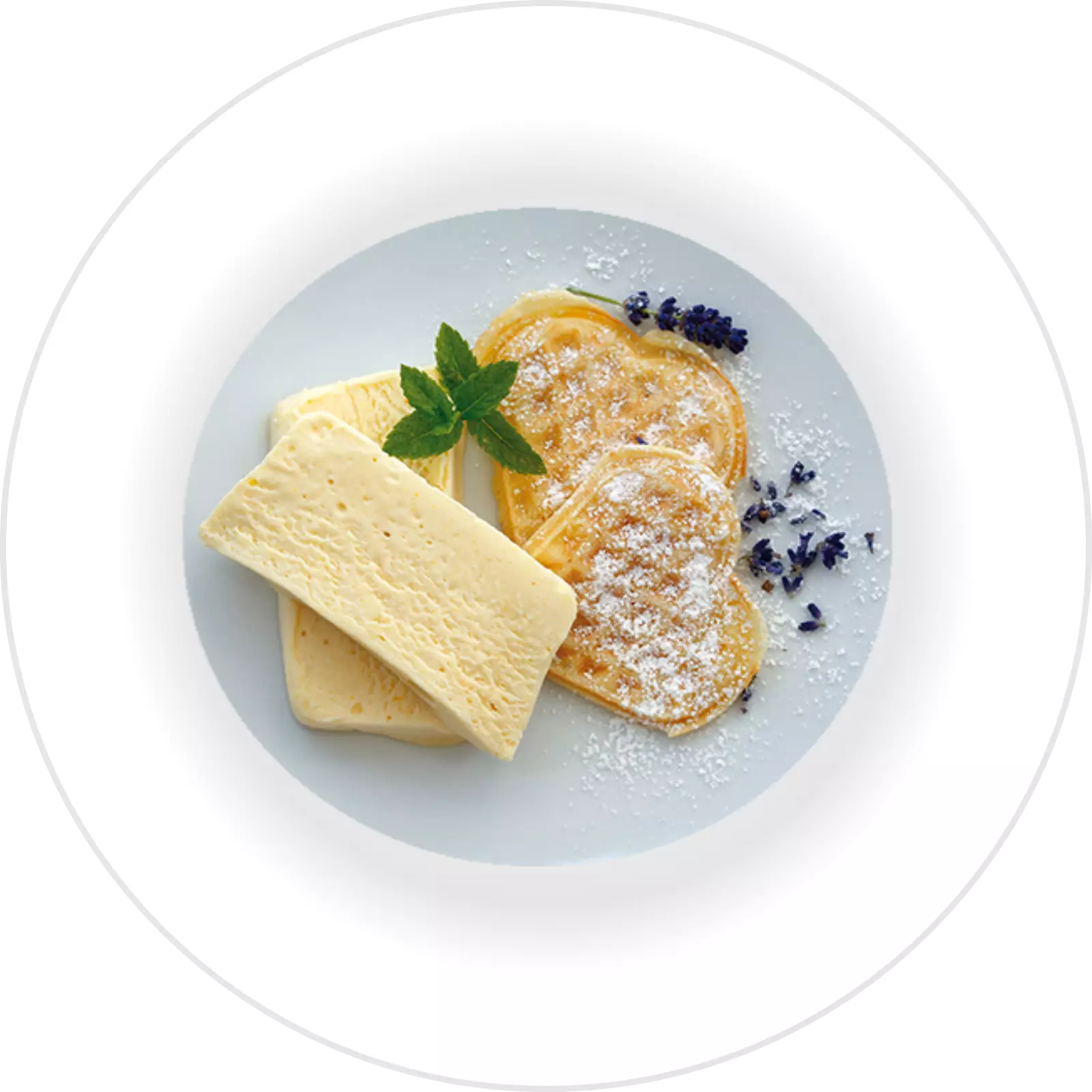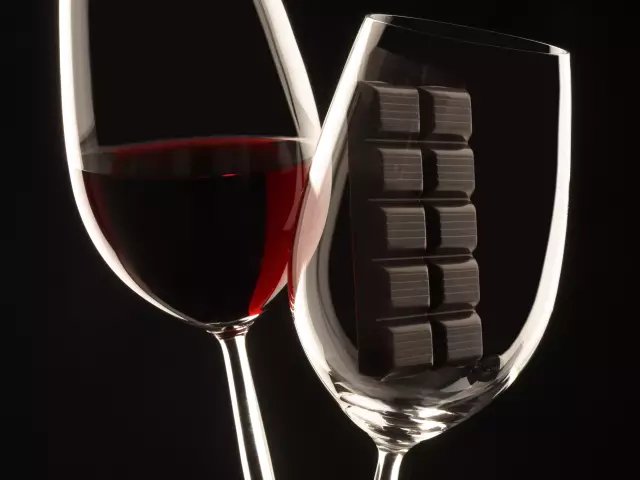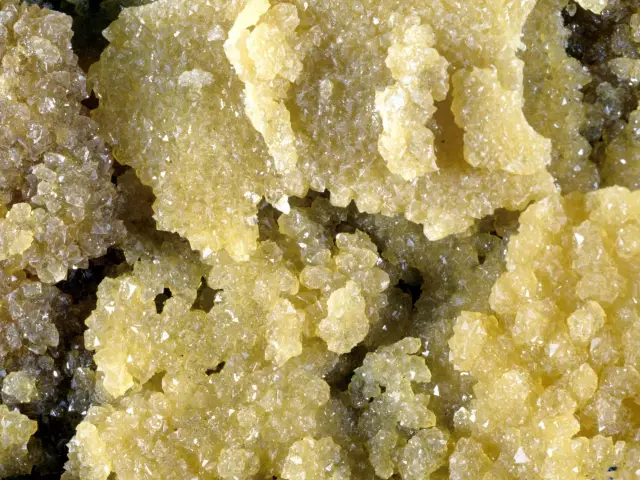Wine Storage
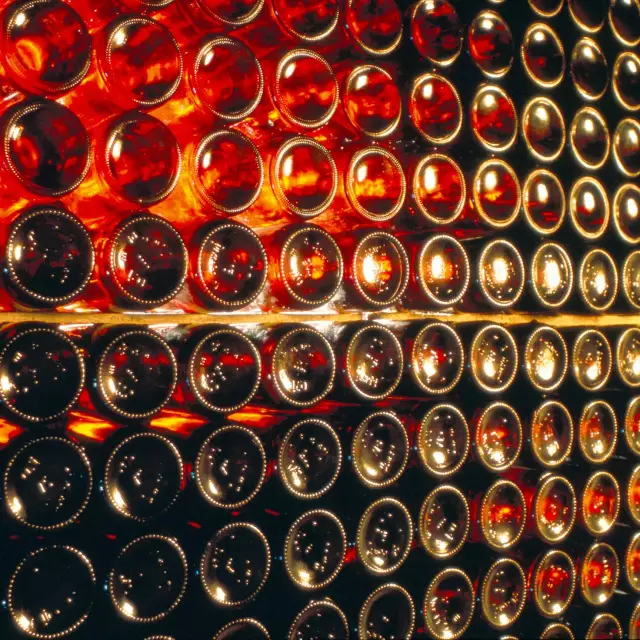
The best way to store wine is in a cool, damp cellar, which is preferably odorless, dark and free of vibrations. An average temperature of 10 - 12 ° C is ideal for wine storage.
And when do you enjoy which wine?
For the professional, a temperature controlled wine cabinet that simulates the optimal conditions of the wine cellar, is recommended as an alternative.
If you don't have such ideal conditions, you don't have to do without a small wine supply. A cool place in the apartment, where the temperatures do not fluctuate too much, also suffices. Often this is the bedroom, even if this sounds strange at first. There is always a place under the bed for a few bottles of good wine. Basically, the higher the ambient temperature, the faster the wine matures, so permanent temperatures above 20 ° C are to be avoided if possible, as are strong smells or exposure to light.
Wine closures determine the type of storage
For long-term storage, wines that are closed with corks should be kept lying down so that the cork does not dry out and shrink. Additional protection for premium wines is provided by sealing the cork with a special sealing wax. Cork-sealed wines that are intended to be consumed within 1 - 2 years can also be stored upright, as the moisture from inside the bottle keeps the cork sufficiently moist.
Wines with plastic corks, screw caps, bottle caps or glass caps can be safely stored upright.
Potential for aging increases with quality
Every wine is individual, therefore life expectancy differs. In general, however, it can be said that the higher the alcohol, sweetness, acidity and - in the case of red wine - tannins, the longer the wines can age. It depends on the sum of these components. This means that noble sweet wines such as Trockenbeerenauslesen or ice wines, which have a fresh acidity and sufficient alcohol content, can be stored for 20 years or even longer. They often attain their full maturity and elegance after aging for several years so make exceptional gifts for very special occasions, such as weddings. It can be memorable to enjoy a wine from your year of birth.
Premium red wines with a high tannin content and 13% or more alcohol volume can also remain stable for decades, especially if they are also aged in barrels. Basic quality dry wines should be drunk within 3 years. In the premium range, 5-10 years are not a problem for dry wines. With Spätlesen and Auslesen wines, especially of the more acidic Riesling variety, the wine can be stored a little longer.
Sparkling wine tastes best fresh. Branded sparkling wines should be bought as soon as possible before consumption and stored for a maximum of one year. Winzersekt, made with the traditional bottle fermentaion, can tolerate 2-3 years of storage. Rosé and Weißherbst taste best when drunk young, because the pronounced fruit flavors come to the fore most clearly in the first few years. They are rarely intended for long storage, so they should be consumed within 1-2 years.
When buying wines that are intended for a longer storage, it is advisable to buy a little more because it is extremely exciting to repeatedly try the same wine every few years and follow its maturity. With this in mind, the rule of thumb is to store 3x30 bottles of wine rather than 30x3 bottles. For many wine connoisseurs, choosing the time of perfect maturity and then drinking the wine at its peak on a special occasion is the greatest joy. However, it also requires a little practice and you should also seek the advice of experts or the winemaker from whom the wine was bought. Specialist books or special wine seminars on the subject are also helpful.
From which century is the oldest still liquid wine in the world?
The oldest still liquid wine dates back to the 4th century. The bottle was discovered in a grave in 1867 and can now be seen in the Historical Museum of the Palatinate in Speyer.
Varietals

More recipe ideas
with apples Pork medallions
with apples
- 8 Stück Schweinemedaillons
- 500 Gramm Bandnudeln
- 2 große Äpfel
- 200 ml Sahne
- 10 Blättchen frischer Salbei
- 4 Zweige frischer Thymian
- nach Geschmack Zucker
- 3 EL Calvados
- 1 EL Öl
- zum Abschmecken Salz & Pfeffer
Slightly pepper and salt the medallions on both sides. Pluck the thyme, cut the sage into fine strips and roll the medallions in the herbs. Fry the meat in a pan with a little oil on both sides, not too hot, until it starts to colour. Remove from the pan and place on a preheated tray in the oven at 100 °C until cooked through.
Cook the tagliatelle al dente and keep warm.
In the meantime, peel the apples and cut into slices approx. 1.5 cm wide. Reheat the meat pan and add the apple slices. After about half a minute, sprinkle 1 teaspoon of sugar over the apples and allow them to caramelise. After a minute, deglaze the apple slices with a generous dash of Calvados and flambé. Add the cream and flavour with salt and pepper.
Remove the fillet from the oven. Add the meat juices from the oven dish to the sauce and serve the fillets with the tagliatelle, apple slices and Calvados apple sauce.
<p- Riesling (trocken)
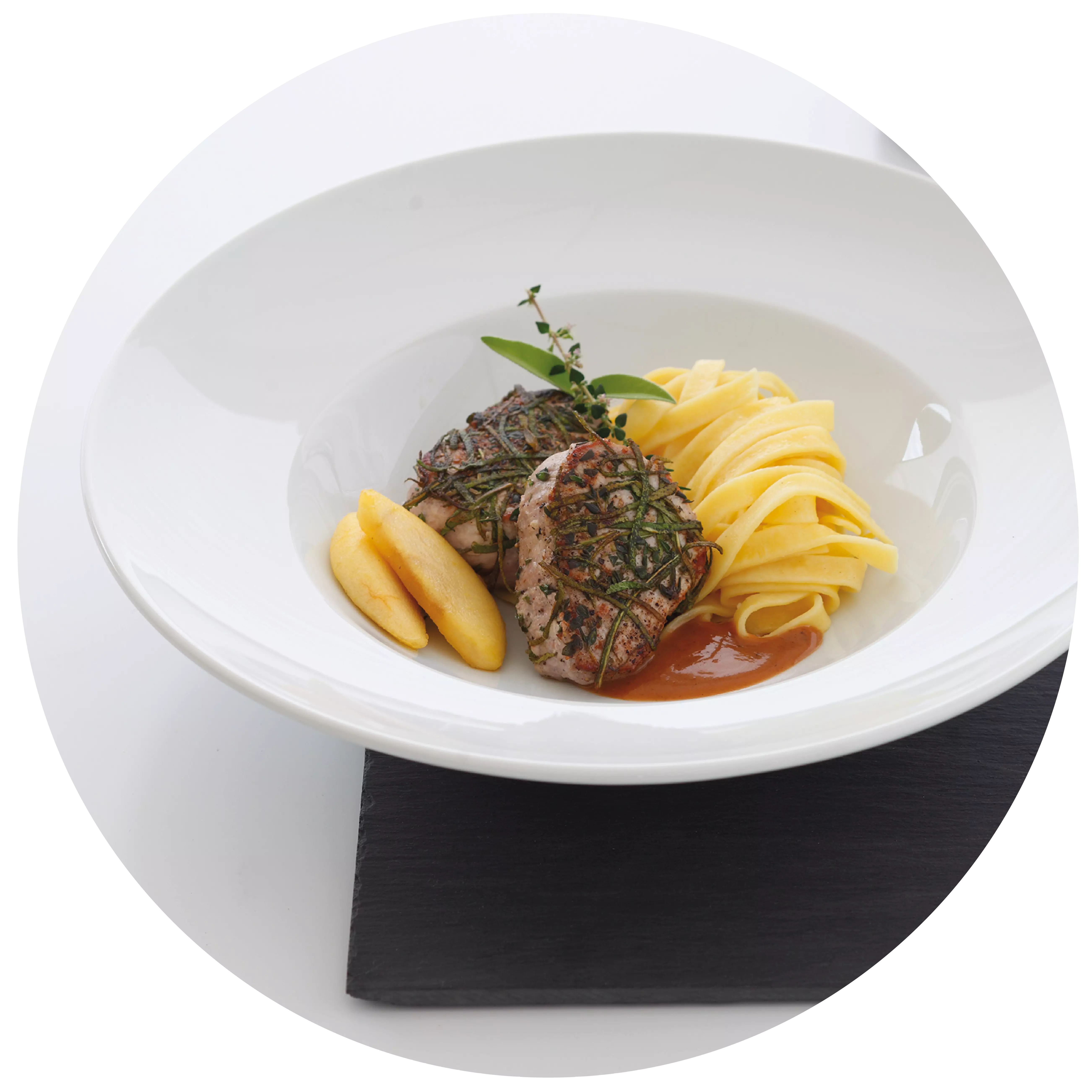
with pear wedges Chicken breast strips
with pear wedges
- 500 Gramm Hähnchenbrustfilet
- 2 reife Birnen
- 200 ml Birnensaft
- 100 ml Sahne
- 1 ganze Zwiebel
- 4 EL Olivenöl
- nach Belieben Salz & Pfeffer
Cut the chicken breast fillet into strips. Peel the onion and cut into cubes. Heat the olive oil in a pan and fry the meat in it. Add the diced onion and season with salt and freshly ground pepper.
Wash and peel the pears, remove the skin, cut into wedges and sauté in the pan. Deglaze with the pear juice and allow to reduce slightly.
<p
<p>Finally, add the cream and season to taste.
- Müller-Thurgau (halbtrocken & feinherb)
- Kerner (halbtrocken & feinherb)
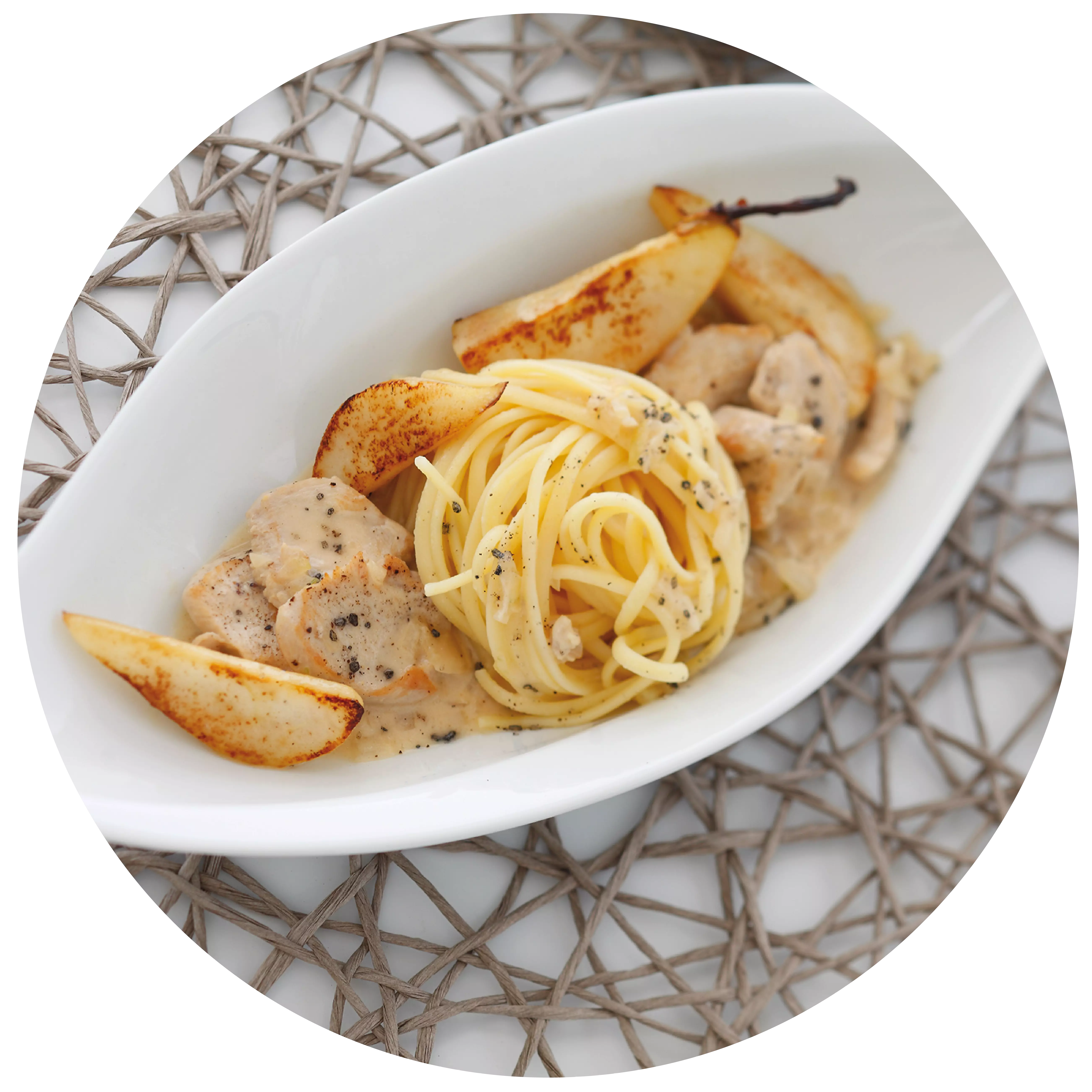
with ribbon noodles Coq au Riesling
with ribbon noodles
- 1 ganzes Huhn
- 0,4 Liter Riesling
- 0,2 Liter Sahne
- 1 kl. Glas Cognac
- 2 Stück Schalotten
- 1 Stück Knoblauchzehe
- 1 Stück Eigelb
- 1/2 Bund Petersilie
- 1 EL Mehl
- 50 Gramm Butter
- 1 EL Olivenöl
- nach Belieben Salz & Pfeffer
Carve the chicken. Heat approx. 50 g butter with 2 tbsp olive oil in a large frying pan and fry the chicken pieces until light brown (without the lid). Season lightly with salt.
Finely chop the shallots, peel and finely chop the garlic. Chop the parsley and add everything to the meat. Sauté briefly with the pan closed. Pour the cognac over the meat and light it (flambé). Deglaze with 1/3 litre of Riesling and leave to simmer for half an hour over a low heat. If necessary, add a little more wine and simmer for a further 10 minutes.
Remove the chicken pieces and keep warm for a short time. Mix 1 tbsp of flour with 1 egg yolk and the cream and whisk into the sauce. Flavour with salt and pepper. Return the chicken pieces to the pan. Serve immediately.
This goes well with tagliatelle.
Variant:Fry 150 g fresh mushrooms in 50 g butter and add.
- Riesling (trocken)
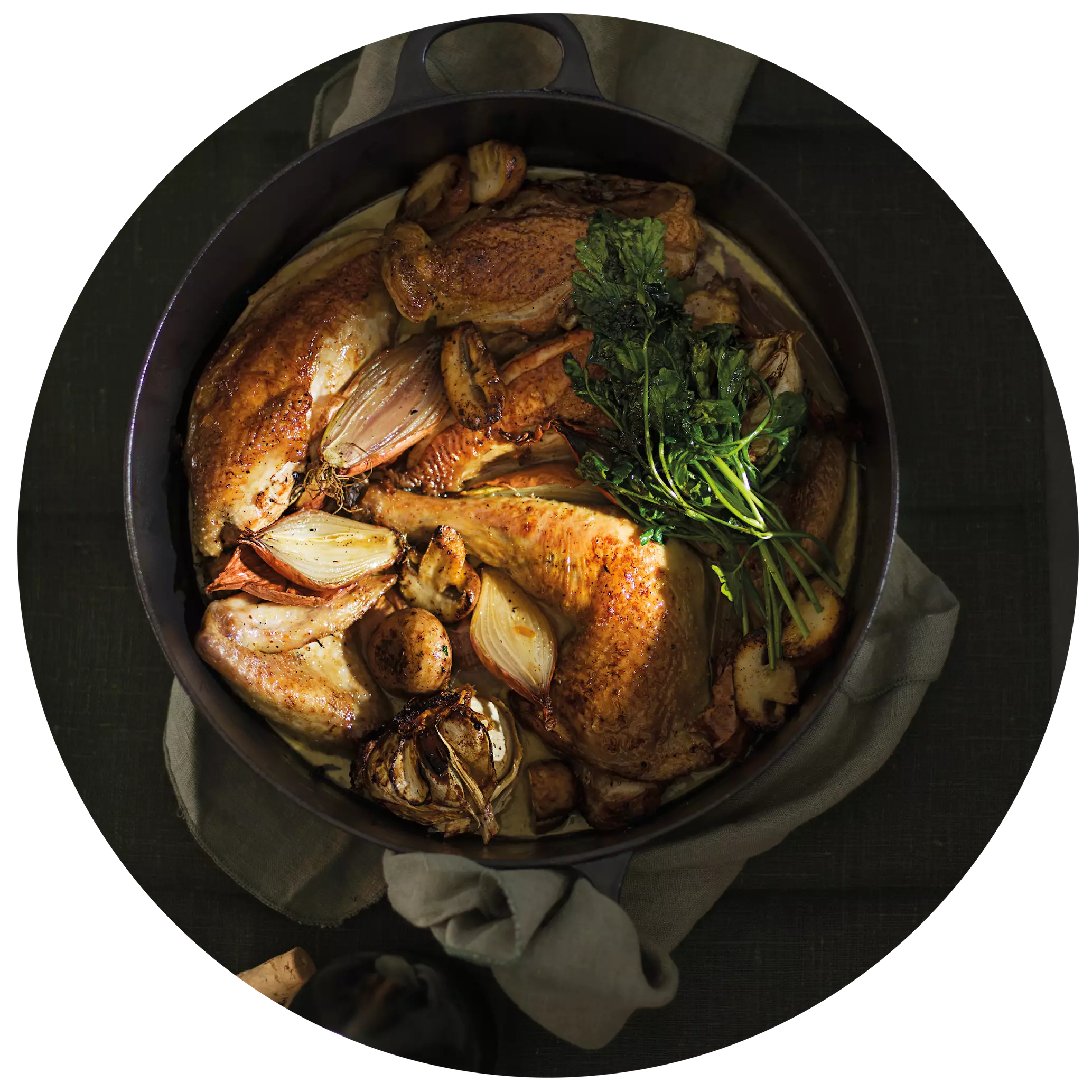
with semi-frozen goat's milk Lavender waffles
with semi-frozen goat's milk
- 2 Stück Eigelb
- 60 ml Ziegenmilch
- 500 Gramm weiße Kuvertüre
- 125 ml Sahne
- Abrieb und Saft einer halben Orange
- 2 cl Tresterbrand
- 8 Blatt Minze
- 125 Gramm Mehl
Semi-frozen goat's milk: Beat the egg yolks and goat's milk in a bowl over a hot bain-marie until creamy. Remove from the bain-marie and beat the cream until cold. Flavour with the zest of the orange and the marc brandy.
Liquefy the couverture in a bain-marie and stir into the lukewarm egg mixture. Whip the cream until stiff and carefully fold in. Line a parfait tin (triangular or gutter shape) with cling film. Pour in the mixture and smooth out. Cover well with cling film and leave to freeze in the freezer for at least 8 hours.
About 20 minutes before serving, remove the mould from the freezer and turn the parfait out of the mould. Remove the foil and cut the semi-frozen parfait into 8 slices.
<p
<p>Lavender wafers: Lightly mash the butter in a mixing bowl with a fork. Add the sugar and stir a little. Add half of the milk, the lavender sugar and the baking powder. Stir in the eggs and finally the rest of the milk. Mix everything well with a hand mixer for about 2 minutes to create a homogeneous, slightly liquid mixture. Bake the batter in batches in a waffle iron until golden brown.</p
<p>Arrange 2 slices of semifreddo on each waffle on a flat plate and decorate with mint leaves.
- Riesling (halbtrocken & feinherb)
